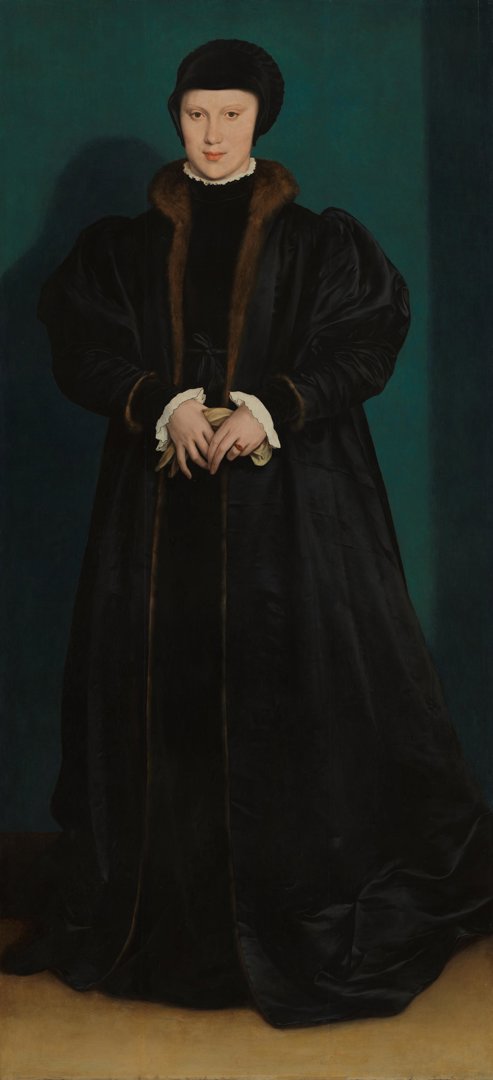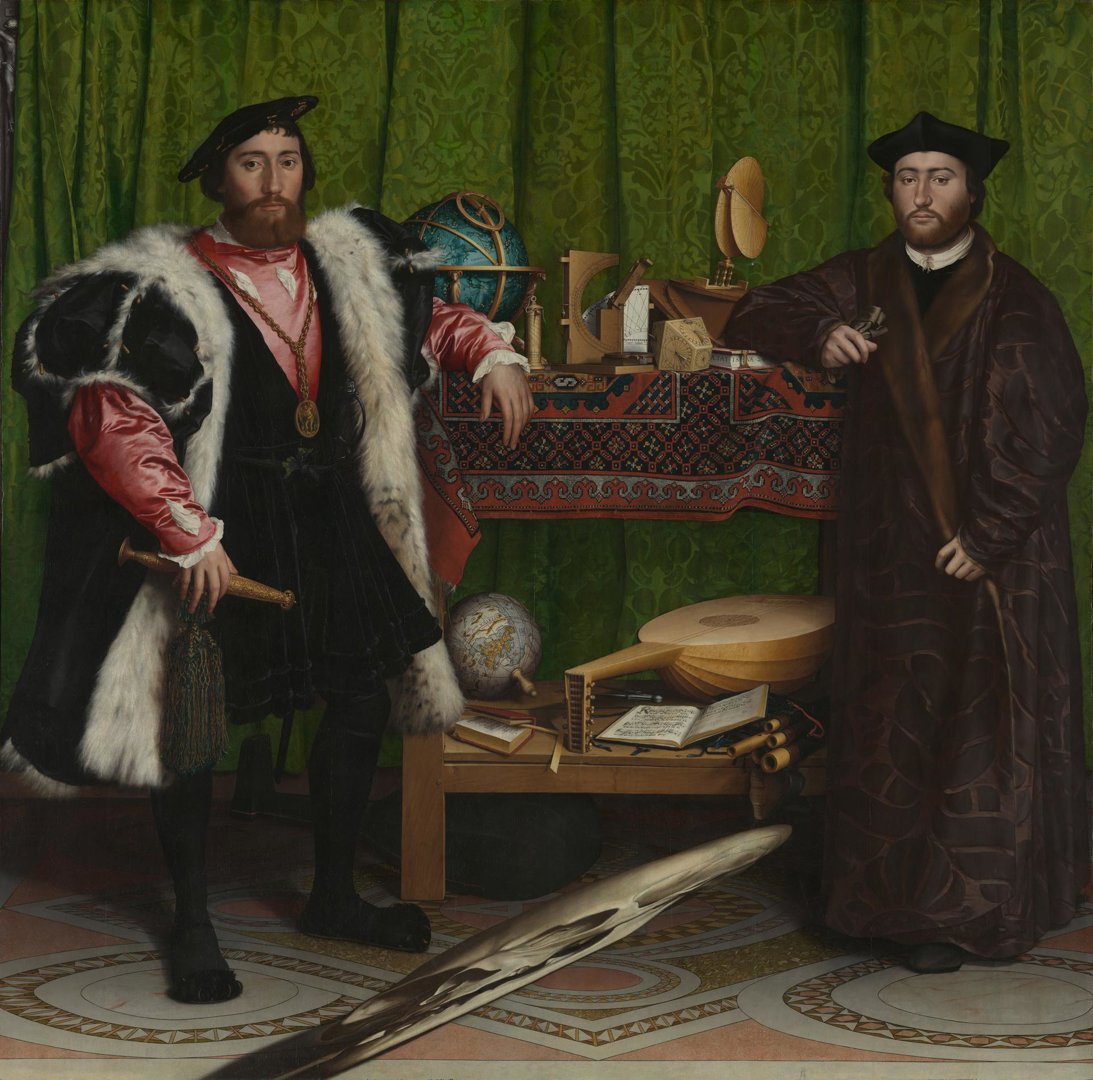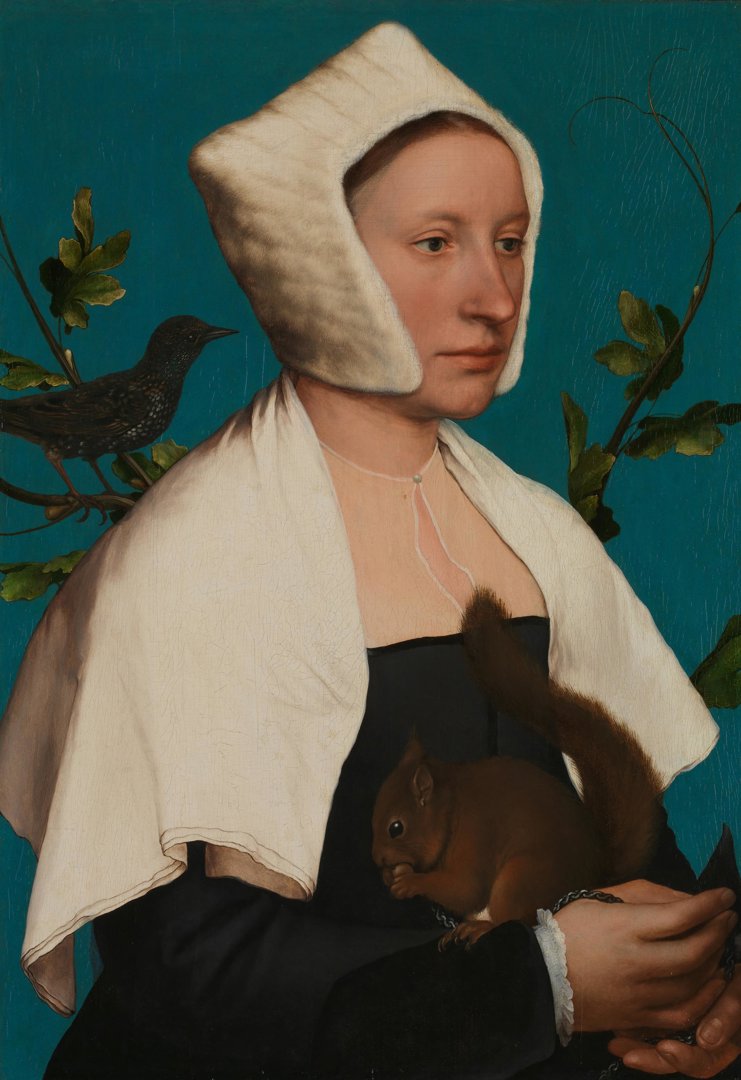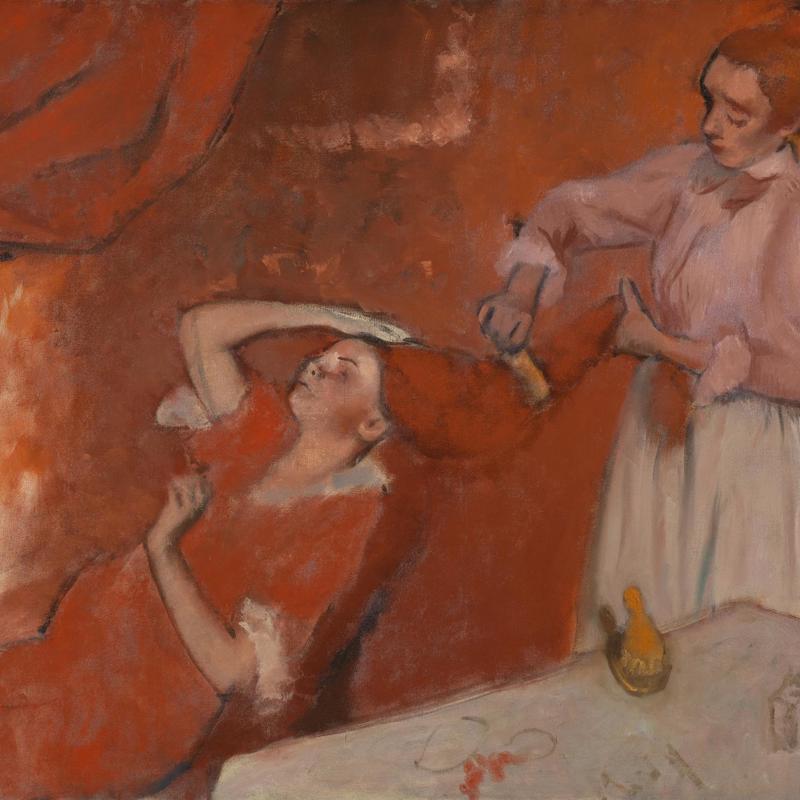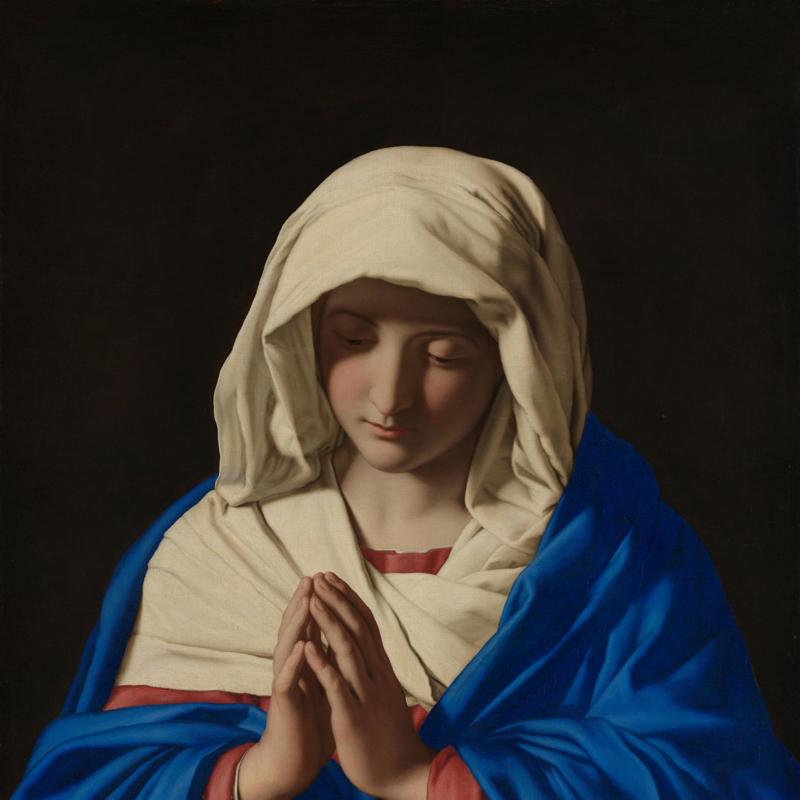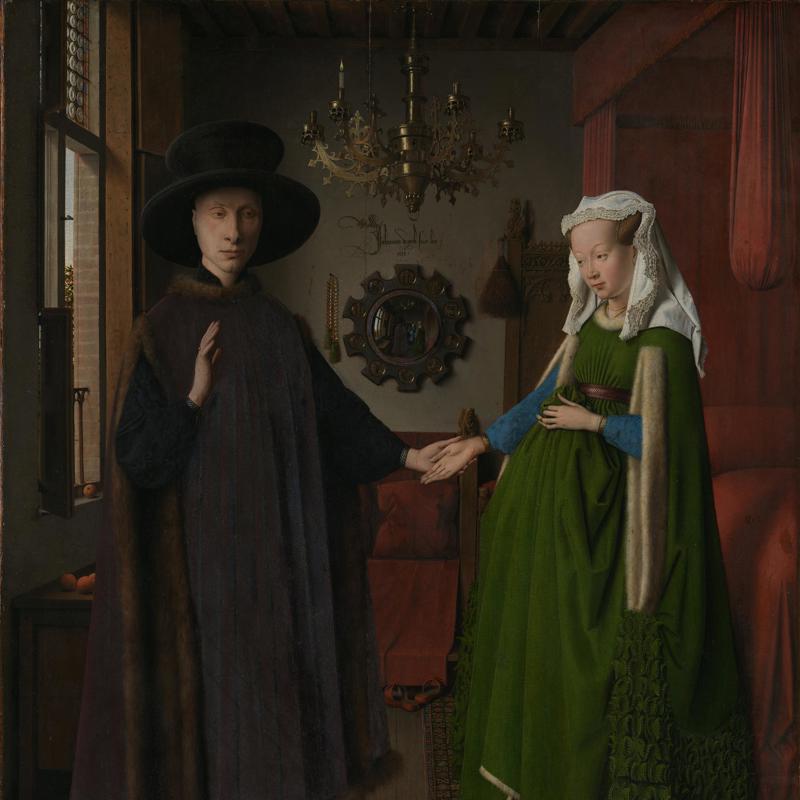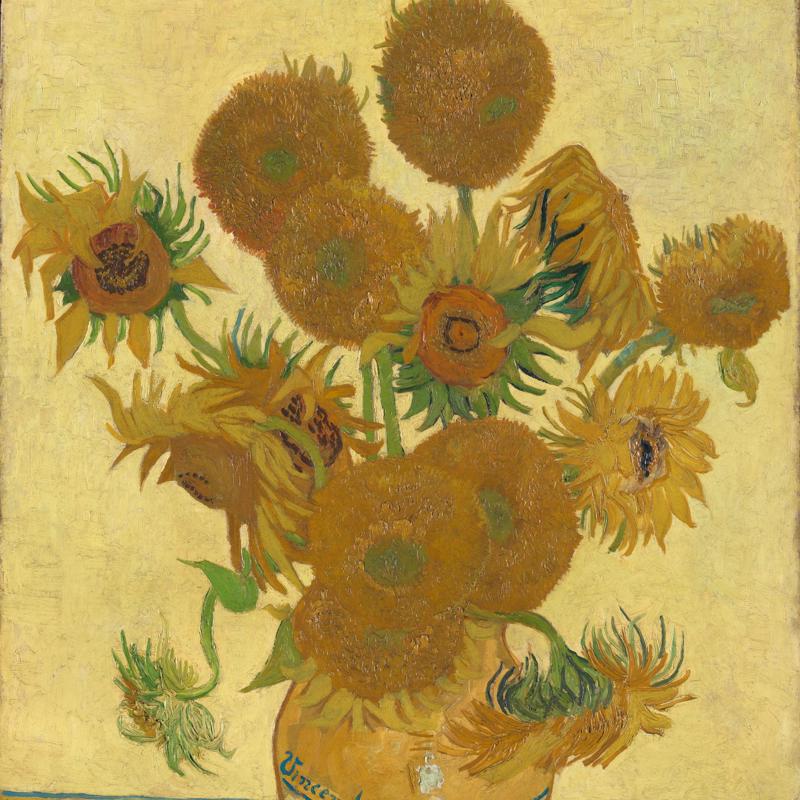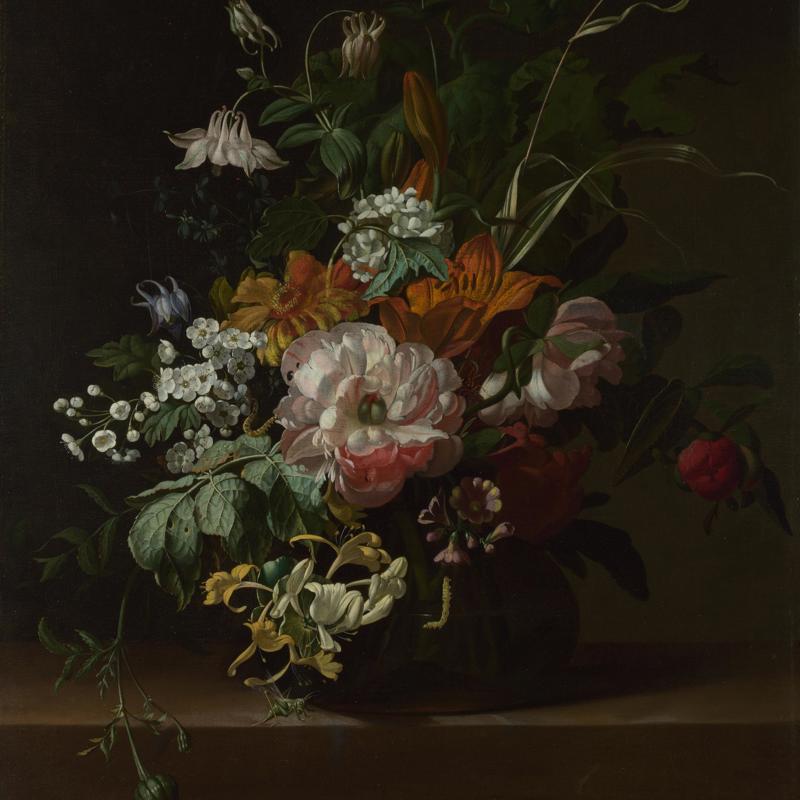It may not be surprising to learn that black was one of the first pigments ever to be used. Where there was fire, there was charcoal – a material still used by artists to this day. Even if you’re not an artist, just look at the remnants of a bonfire or even the wick of a used candle, and it’s easy to imagine how this readily available material was used creatively thousands of years ago.
The colour black has many associations throughout history. It has been linked to death and mourning in Western culture since the time of the Roman Empire. Mourning subjects have been painted wearing black, for example in Hans Holbein the Younger’s ‘Christina of Denmark, Duchess of Milan’.
It has also been linked to evil magic and darkness, such as in ‘Witches at their Incantations’ by Salvator Rosa, a gruesome work depicting a witches’ sabbath, a gathering where the devil was worshipped.
Yet black also symbolises elegance and wealth, even power. Think of that timeless classic in the fashion world, the little black dress made famous by Coco Chanel and Audrey Hepburn. Or the black credit card, so exclusive you have to be invited to apply for it. Bartholomeus van der Helst’s ‘Portrait of a Lady in Black Satin with a Fan’ showcases the sitter's wealth through her fashionable and costly black satin gown.
Before the 14th century, many kings wore purple as a mark of their power and importance, often exclusively. As a result, Italian bankers took to wearing black, expensive fabrics to mark their own importance, a trend that soon spread. Take a look at Hans Holbein the Younger's ‘The Ambassadors’, in particular the man on the left, Jean de Dinteville, and his luxurious robes in black.
The origins of black pigments
There are a variety of black pigments that have developed over time, many with ancient origins created using methods remarkably similar to those used today.
The caves of Lascaux in southwestern France, discovered in 1940, offer a real insight into the use of pigments by prehistoric artists. These caves are full of drawings using black charcoal and iron minerals. Charcoal is a by-product of burning wood, plants or animal products. It would have been readily available to the artists in this period – around 21,000 years ago!
Over time, humankind experimented with the ideal conditions to create charcoal, and how to either press it into sticks, or powder it with water or other substances to create inks and paints. Solid inks that date back to the 3rd century B.C. have been discovered in China.
Lamp black was used by the Ancient Egyptians, who preferred the deep black that could be achieved using this pigment, in comparison to charcoal based blacks. The pigment word ‘lamp’ gives a big hint to the process involved in this pigment’s creation, the first step was simply collecting soot from candles or oil lamps.
It has often been used to create writing and drawing inks. In the 15th century, lamp black was used by Johannes Gutenberg in his experiments with inks for his new moveable-type printing press, which introduced mass-produced printing. Lamp black continues to be popular as an artist’s pigment to this day, made from the burning of gas or oil.
Hans Holbein the Younger was an artist who used lamp black to help capture saturated, dark fabrics in paint – such as in his 'A Lady with a Squirrel and a Starling (Anne Lovell?)'.
Ivory black, as its name would suggest, was originally created by carbonising ivory. It can also be referred to as bone black, as other animal bones can be used in production. It is of course no longer made with ivory but some pigments are still made with animal bones.
Many say anecdotally that the Impressionists – a group of 19th-century artists who sought to capture the fleeting effects of light – didn’t use black paints at all. They preferred to create their own chromatic blacks for shadows by mixing different colours to create a sense of darkness. However, traces of ivory black have been found in Claude Monet’s ‘The Gare St-Lazare’, perhaps owing to the industrial theme of this work in contrast to his other, more natural, landscapes.
Mars black is part of the Mars family of pigments, all of which are synthetic iron oxides. This was invented in the 20th century as an alternative to the natural black pigments.
There are many different varieties of black pigments on the market for artists, all of which have subtle differences, with varying undertones or intensity.
Why some artists don’t use black
Speak to a cross section of artists throughout art history and into the present day, and you’ll be met with a range of reactions as to whether an artist should use black pigments in their work.
Many find the results too harsh, choosing to achieve shadows and darker tones with something like Payne’s grey – a mix of pigments first created by the British painter William Payne in the late 18th century. Others simply prefer to mix primary colours together themselves. Some say that black can muddy other colours when mixed, but with care and when used sparingly, it can still be impactful.
Louis-Léopold Boilly’s work of about 1799, ‘A Girl at a Window' utilises only tones of grey, white and black. A masterclass in illusionism, here he demonstrates his skill in making an oil painting look like a print.
The future of black pigments
In 2014, Surrey Nano Systems unveiled Vantablack, a material made from carbon nanotubes that absorbs virtually all visible light (99.965%). When used on three-dimensional objects, these super-black coatings can make them appear to be two-dimensional or even just an empty space!
Though invented for use in engineering, Vantablack has caused controversy in the art world. In 2016, Anish Kapoor’s interest in the pigment resulted in an exclusivity deal, sparking debate around whether the entire artistic community should have access to this new and groundbreaking pigment.
In Company Wayne McGregor’s 2025 dance performance ‘Deepstaria’, a large black square of Vantablack sat at the back of the stage. Known for embracing new technologies, McGregor spoke of how this created a void that the dancers struggled with, as it removed their sense of how large the stage was.
The story of black is one that stretches back thousands of years. From ancient cave paintings made in charcoal to the epoch-defining inks of Gutenberg’s printing press, it has been a pivotal part of humanity’s artistic output – and continues to challenge and excite artists well into the 21st century.



